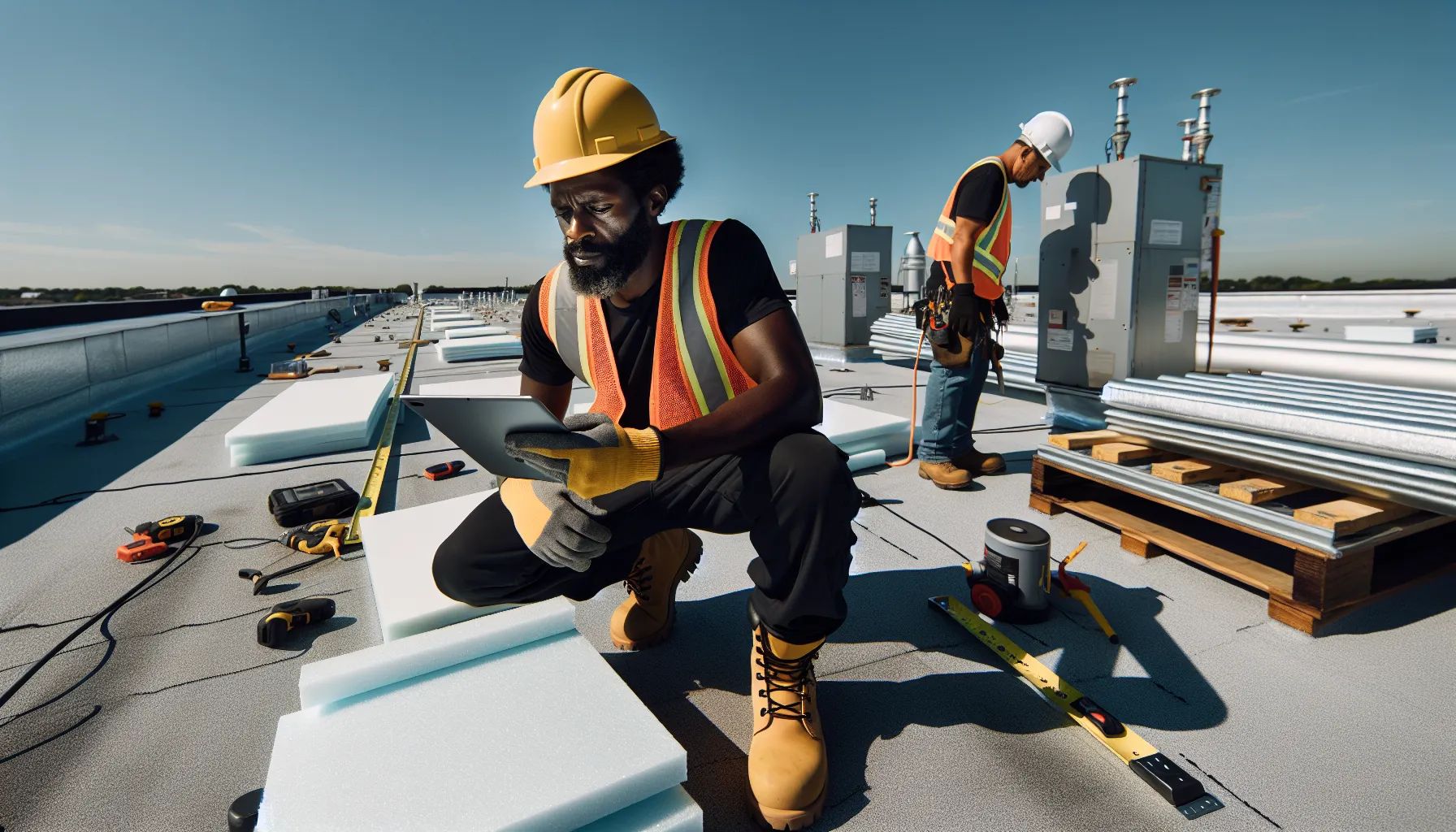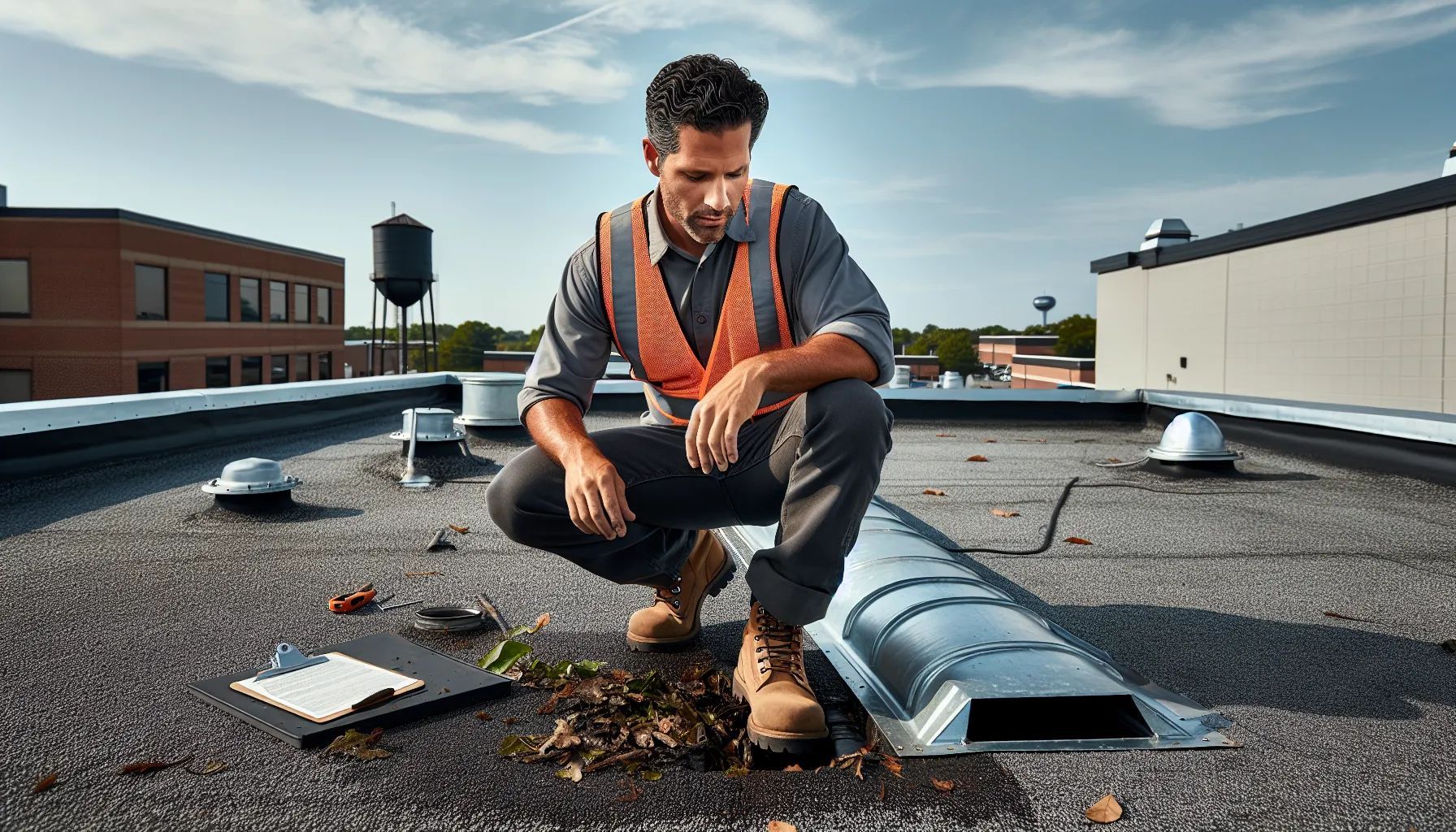How to Remove Mildew on Roof: Prevention Tips & Warning Signs for Homeowners
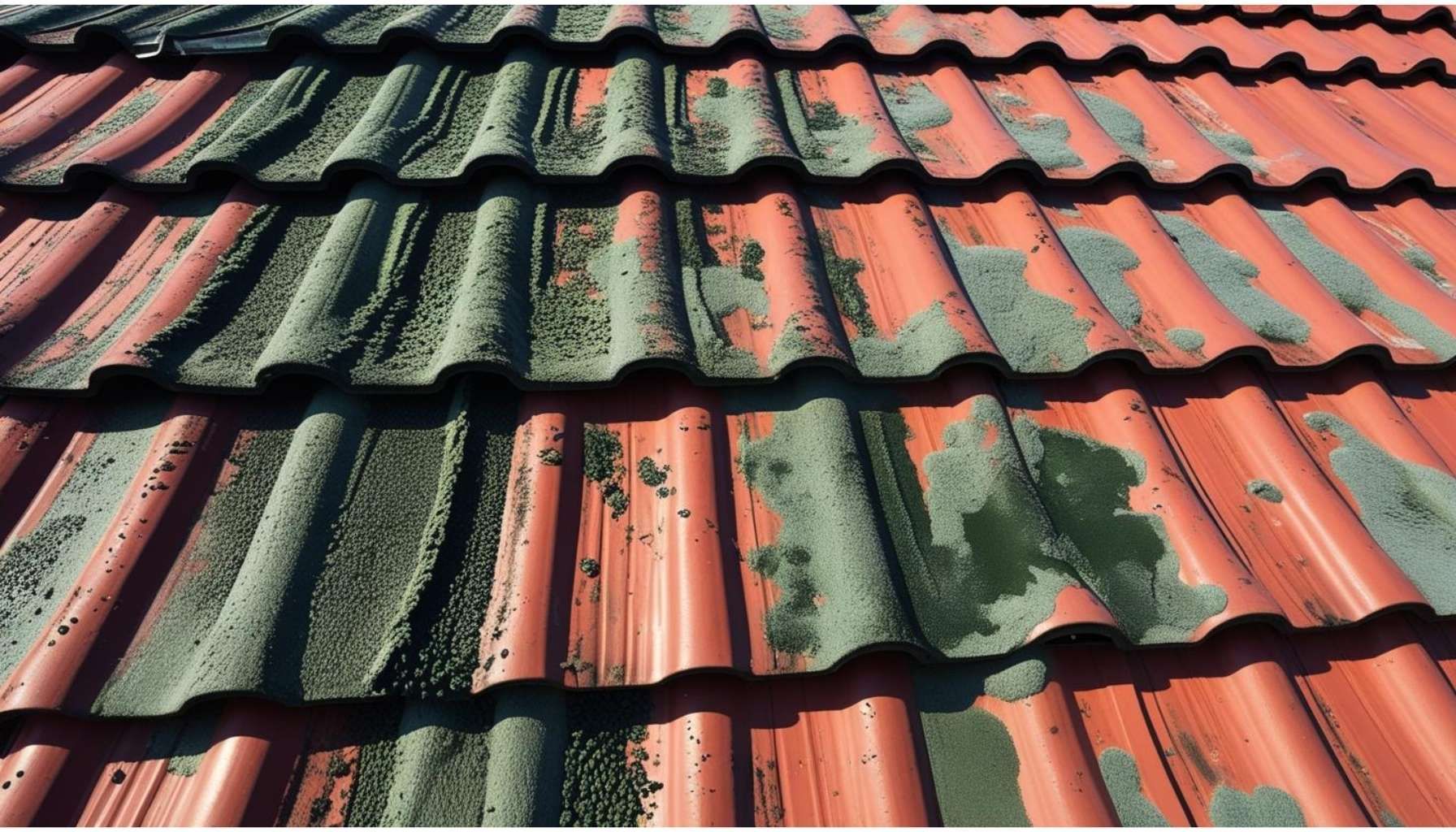
That dark discoloration spreading across your roof isn't just an eyesore – it's mildew on roof surfaces that could be slowly compromising your home's first line of defense. We've seen countless homeowners ignore these telltale signs until expensive damage forces their hand.
Understanding the science behind roof mildew formation is crucial for every homeowner. We've compiled essential insights that'll help you identify early warning signs and take decisive action before minor issues escalate into major repairs.
What Is Roof Mildew and How Does It Form?
Roof mildew is a fungal growth that develops on roofing materials when moisture combines with organic matter. This microorganism spreads across shingles and other surfaces, creating dark patches that compromise both appearance and structural integrity.
Common Causes of Mildew Growth
Moisture accumulation creates the primary condition for mildew development on roofs. Shaded areas retain water for 12-24 hours after rainfall, providing ideal growth conditions. Poor ventilation traps humid air in attic spaces, allowing temperatures to reach 80-90°F during summer months.
Organic debris serves as food for mildew colonies. Leaves, pollen, and dust collect in roof valleys and gutters, creating nutrient-rich environments. A single maple tree drops approximately 500,000 leaves annually, contributing significant organic matter to nearby roofs.
Climate factors accelerate mildew formation in specific regions. Areas receiving 40+ inches of annual rainfall experience 3x higher mildew growth rates. Coastal properties face additional challenges from salt spray, which attracts moisture and promotes fungal activity.
Roof age correlates directly with mildew susceptibility. Asphalt shingles lose protective granules after 15-20 years, exposing porous surfaces. Older roofs absorb 25% more moisture than new installations, creating favorable conditions for fungal colonization.
Difference Between Mildew and Other Roof Growths
Mildew appears as flat, powdery patches ranging from white to gray in color. These surface-level growths spread horizontally across shingles without penetrating deep into materials. Mildew typically covers 10-50 square feet within 2-3 months of initial formation.
Moss presents distinct characteristics from mildew growth patterns. Green, cushion-like clumps develop 0.5-2 inches thick on north-facing slopes. Moss roots penetrate shingle surfaces, lifting edges and creating water infiltration points.
Algae forms dark streaks running vertically down roof surfaces. Gloeocapsa magma, the most common roof algae, produces black pigmentation to protect against UV rays. These organisms thrive in humid climates where temperatures remain above 70°F for extended periods.
Lichen combines algal and fungal components into crusty, leaf-like structures. Orange, yellow, or green patches adhere tightly to roofing materials through chemical bonds. Lichen growth indicates long-term moisture exposure, often developing after 5-7 years of favorable conditions.
Signs You Have Mildew on Your Roof
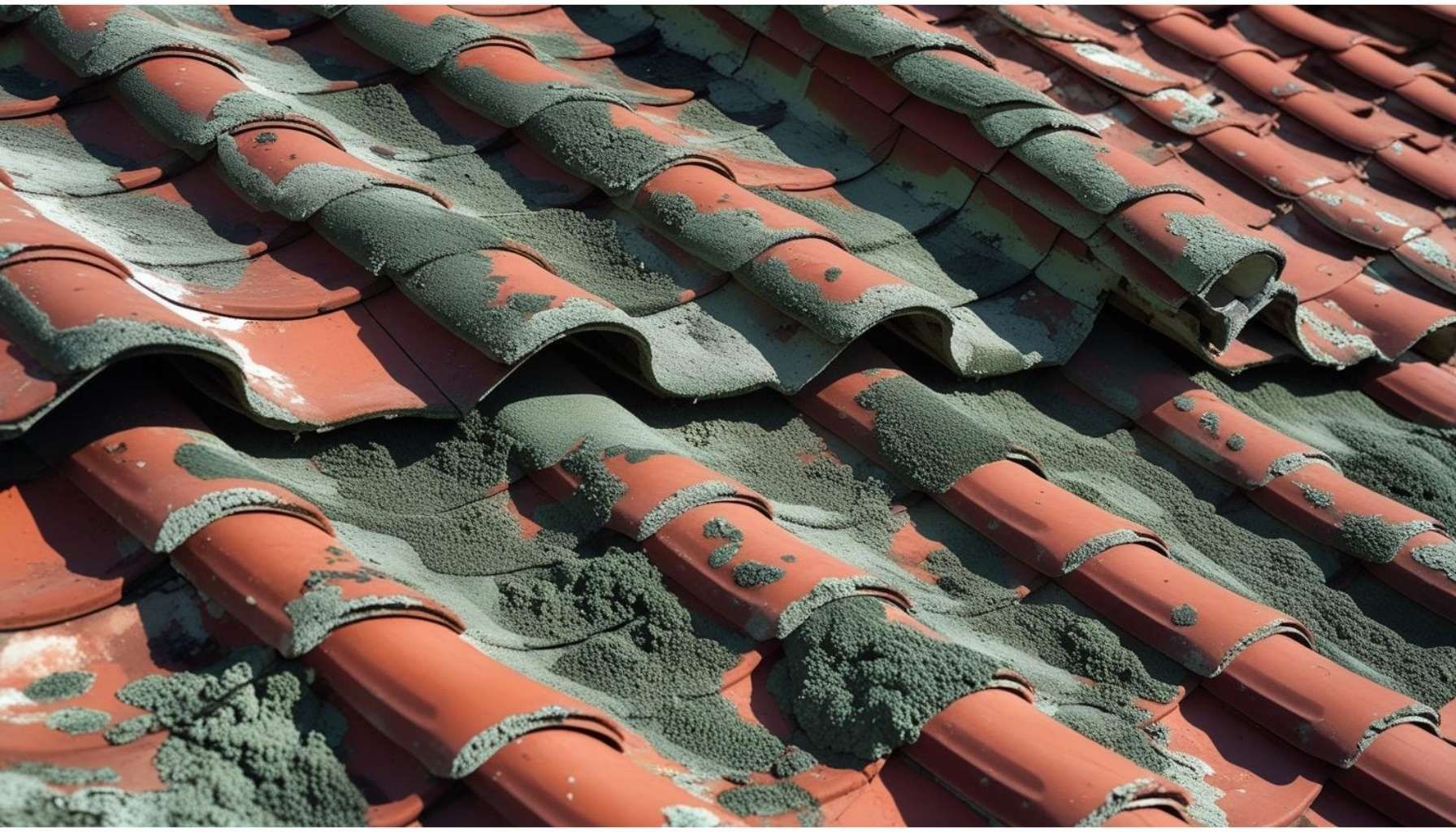
Recognizing mildew on your roof requires careful observation of specific indicators that signal fungal growth. Early detection prevents extensive damage and protects your home's structural integrity.
Visual Indicators
Dark streaks running down your roof surface represent the most common sign of mildew growth. These discolorations appear in shades of green, black, or brown and typically start near the roof's peak where moisture accumulates. Patches measuring 2-3 feet wide often develop within 6 months of initial spore settlement.
Moss growth indicates excessive moisture retention that promotes mildew development. Green moss clumps measuring 1-4 inches thick trap water against shingles and create ideal conditions for fungal expansion. Lichen formations—circular growths combining algae and fungi—adhere tightly to roofing materials and signal prolonged moisture exposure lasting 12 months or more.
Damaged shingles exhibit brittleness and cracking when mildew weakens their structure. Affected shingles break easily during routine maintenance and show granule loss 30% faster than healthy materials. Corner lifting and edge curling occur as mildew deteriorates the adhesive bonds holding shingles in place.
Smell and Other Warning Signs
Musty odors penetrating your attic space indicate active mildew colonies releasing spores. This distinctive smell intensifies during humid weather and becomes noticeable when attic temperatures exceed 75°F. Indoor air quality tests detect spore counts exceeding 1,000 particles per cubic meter in affected homes.
Water stains appearing on interior ceilings reveal roof leaks caused by mildew damage. Brown or yellow discolorations measuring 6-24 inches across form when compromised roofing allows water infiltration. Paint bubbling and drywall softness accompany these stains in 85% of mildew-related leak cases.
Increased allergy symptoms among household members suggest airborne mildew spores entering living spaces. Respiratory irritation, sneezing, and eye watering affect sensitive individuals within 48 hours of exposure. Children and elderly residents experience symptoms at spore concentrations 50% lower than healthy adults tolerate.
Health and Structural Risks of Roof Mildew
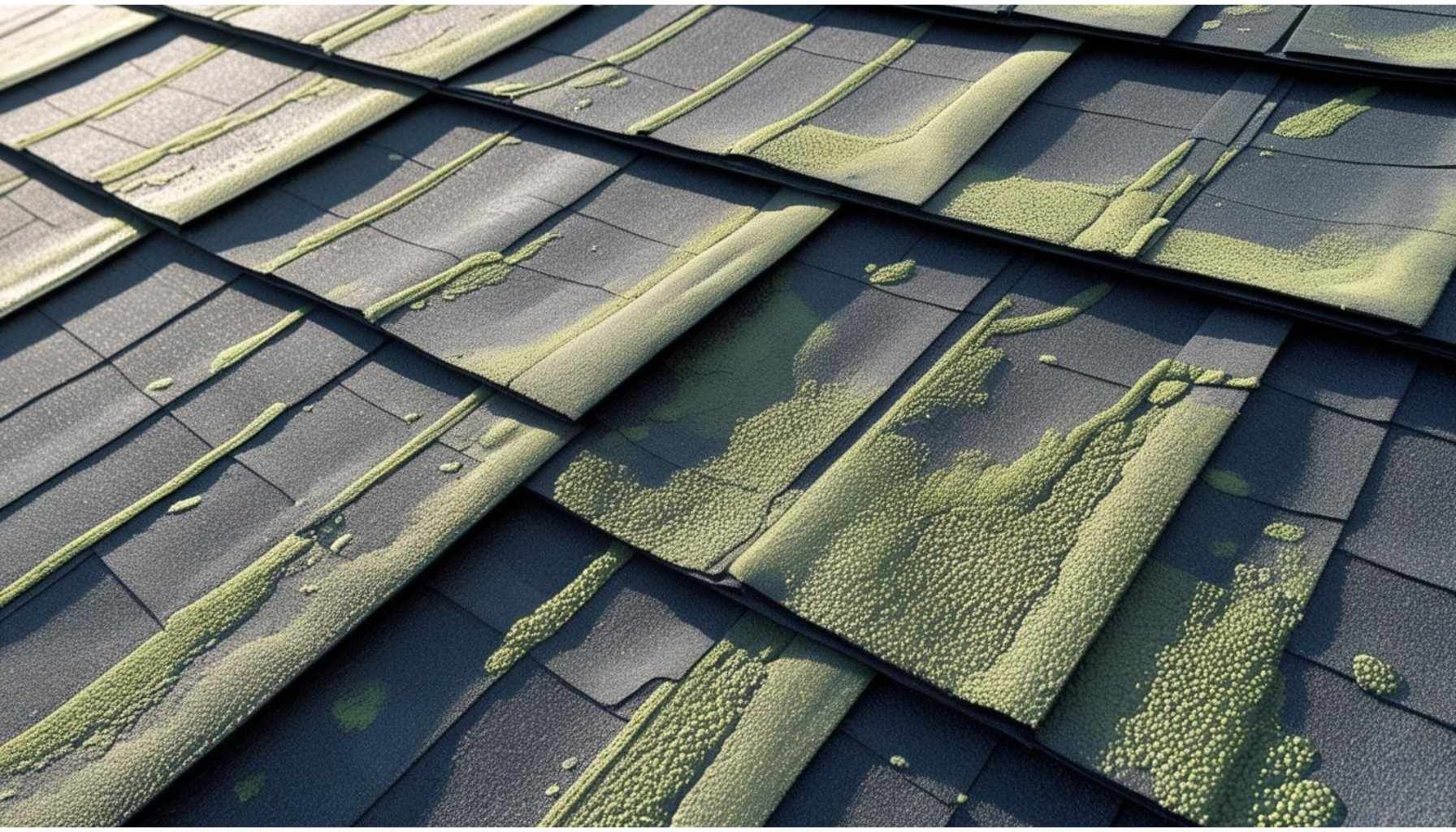
Roof mildew creates serious health hazards and structural damage that extends beyond surface discoloration. We've identified multiple risks that affect both occupants and building integrity when mildew colonies establish themselves on roofing systems.
Impact on Indoor Air Quality
Mildew releases millions of spores into your home's air circulation system. These microscopic particles travel through attic spaces and ventilation ducts, contaminating indoor environments. According to environmental health studies, mold spores from roof mildew trigger allergic reactions in 10-30% of the population.
Respiratory symptoms develop when occupants breathe contaminated air. Common reactions include persistent coughing, wheezing, nasal congestion, and throat irritation. Children and elderly residents experience heightened sensitivity to these airborne contaminants.
Water intrusion from mildew-damaged roofs amplifies air quality problems. Moisture seeping through compromised shingles creates ideal conditions for secondary mold growth in attics and wall cavities. Indoor humidity levels rise above the recommended 30-50% range, fostering additional microbial proliferation.
Professional air quality testing reveals spore counts exceeding 1,000 particles per cubic meter in homes with active roof mildew. These elevated levels correlate with increased asthma attacks and allergy medication usage among household members.
Damage to Roofing Materials
Mildew colonies break down roofing materials through enzymatic action. Fungal hyphae penetrate asphalt shingles, creating microscopic channels that allow water infiltration. Laboratory tests show mildew-infected shingles lose 40% of their tensile strength within 24 months.
Wooden roof components suffer accelerated deterioration from mildew exposure. Rafters, decking, and fascia boards develop soft spots as fungal growth digests cellulose fibers. Structural engineers report load-bearing capacity reductions of 25-35% in mildew-affected timber.
Metal flashing and fasteners corrode faster in mildew-rich environments. Acidic metabolites produced by fungal colonies lower pH levels on roof surfaces, accelerating oxidation processes. Galvanized nails and screws fail 3-5 years earlier than their expected lifespan.
Replacement costs escalate when mildew damage spreads beneath surface materials. Complete roof tear-offs average $15,000-$25,000 for homes with extensive mildew infiltration, compared to $5,000-$8,000 for standard shingle replacement projects.
How to Remove Mildew from Your Roof
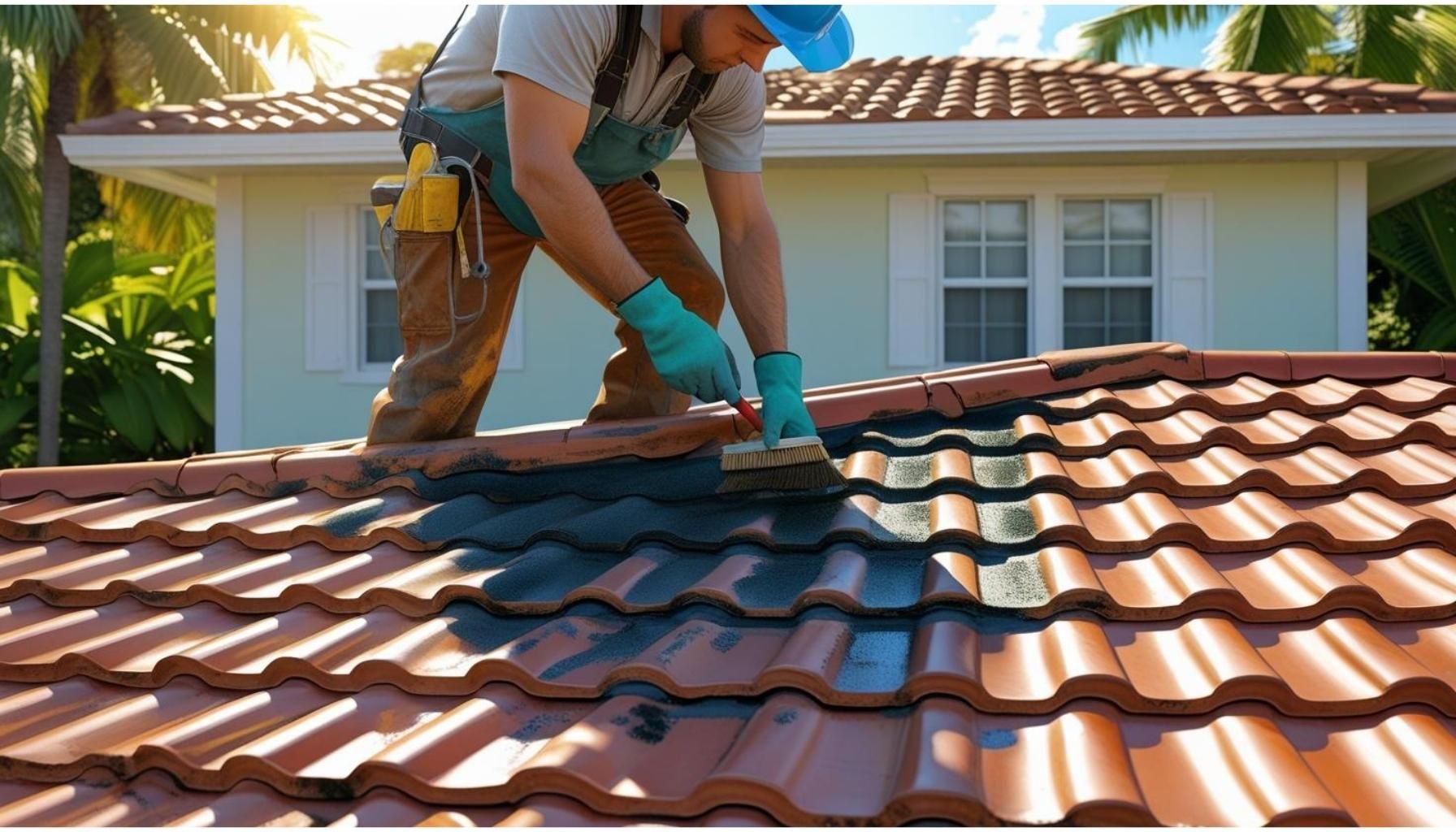
Removing mildew from your roof requires proper techniques and safety measures to protect both your roofing materials and your health. We'll guide you through effective DIY methods and help you determine when professional assistance becomes necessary.
DIY Cleaning Methods
White Vinegar Solution works as a natural antimicrobial agent. Fill a spray bottle with undiluted white vinegar and apply it directly to mildew patches. The acetic acid in vinegar penetrates mildew spores within 60 minutes. Spray affected areas thoroughly and let the solution sit before scrubbing with a soft-bristled brush. Rinse with clean water to remove dead mildew and vinegar residue.
Trisodium Phosphate (TSP) Method provides stronger cleaning power for stubborn mildew. Mix 1/4 cup TSP with one gallon of water in a bucket. Apply this solution using a pump sprayer or sponge to cover mildew-affected areas completely. TSP breaks down mildew's cellular structure within 15 minutes. Scrub gently and rinse thoroughly to prevent chemical residue buildup.
Bleach Solution combines multiple cleaning agents for maximum effectiveness. Mix one quart of bleach with one gallon of water and 1/4 cup TSP. This solution kills 99.9% of mildew spores on contact. Apply using a pump sprayer and avoid oversaturation. Never use pressure washers on asphalt shingles as high pressure removes protective granules.
When to Call a Professional
Professional intervention becomes essential under specific circumstances. We identify key situations where expert help protects your safety and investment.
Safety concerns top the list for professional assistance. Roof work involves heights exceeding 10 feet and slippery surfaces when wet. Professional roofers carry liability insurance and use fall-protection equipment. They complete mildew removal 3-4 times faster than DIY attempts while maintaining safety standards.
Severe infestations covering more than 30% of your roof surface require professional equipment. Commercial-grade cleaning solutions and specialized application tools ensure complete mildew elimination. Professionals identify underlying moisture problems causing recurring growth. They apply preventive treatments lasting 2-3 years longer than DIY applications.
We emphasize regular roof inspections every 6 months to catch mildew early. Professional cleaning costs $300-$600 for average-sized roofs but prevents replacement costs exceeding $10,000.
Preventing Mildew Growth on Your Roof
Prevention proves more cost-effective than remediation when we address roof mildew. Our comprehensive approach combines proper ventilation, regular maintenance, and strategic material selection to create an environment where mildew cannot thrive.
Proper Ventilation Solutions
Adequate ventilation serves as our primary defense against mildew formation. We achieve optimal airflow by installing ridge vents paired with soffit vents, creating a continuous circulation pattern that removes moisture-laden air from attic spaces.
Installing 1 square foot of ventilation for every 150 square feet of attic space meets industry standards. Ridge vents provide 18 square inches of ventilation per linear foot, while soffit vents offer 9 square inches per linear foot. We position intake vents low and exhaust vents high to maximize natural convection.
Gable vents supplement our ventilation system in homes with complex roof designs. Power attic ventilators activate when humidity levels exceed 60%, providing additional moisture control during peak summer months. Solar-powered options reduce energy costs while maintaining consistent airflow.
We inspect ventilation components twice yearly to ensure proper function. Blocked vents trap moisture and create ideal conditions for mildew growth. Clear debris from screens, replace damaged components, and verify that insulation doesn't obstruct airflow paths.
Regular Maintenance Tips
Biannual roof inspections detect early mildew formation before extensive damage occurs. We schedule inspections in spring and fall when weather conditions permit safe access and thorough examination.
Debris removal ranks among our most effective preventive measures. Leaves, pine needles, and branches trap moisture against roofing materials. We clear gutters monthly during fall and remove accumulated debris from roof valleys using soft-bristled brushes.
| Maintenance Task | Frequency | Time Required |
|---|---|---|
| Gutter cleaning | Monthly (fall), Quarterly (other seasons) | 2-3 hours |
| Debris removal | After storms | 1-2 hours |
| Visual inspection | Biannually | 30-45 minutes |
| Professional inspection | Every 3 years | 2-3 hours |
Attic insulation plays a crucial role in moisture control. We maintain R-38 to R-49 insulation values in most climates, using moisture-resistant materials like closed-cell spray foam or faced fiberglass batts. Proper insulation prevents condensation by maintaining consistent temperatures across roof surfaces.
We apply preventive treatments annually using EPA-registered antimicrobial solutions. These treatments create invisible barriers that inhibit spore attachment without damaging roofing materials.
Best Roofing Materials to Resist Mildew
Metal roofing offers superior mildew resistance through its non-porous surface. Standing seam aluminum and steel panels shed water immediately, preventing moisture accumulation. Copper roofing naturally releases ions that inhibit fungal growth, providing decades of protection.
Composite shingles infused with copper granules combine traditional aesthetics with enhanced mildew resistance. These materials cost 15-20% more than standard asphalt shingles but extend roof life by 5-10 years in humid climates.
| Roofing Material | Mildew Resistance Rating | Average Lifespan |
|---|---|---|
| Copper | Excellent | 50-70 years |
| Aluminum | Very Good | 40-50 years |
| Composite with copper | Good | 25-30 years |
| Standard asphalt | Fair | 15-20 years |
Climate-specific material selection optimizes mildew prevention. Coastal areas benefit from salt-resistant aluminum, while inland humid regions perform best with copper-infused composites. We factor local rainfall amounts, humidity levels, and temperature ranges into material recommendations.
Proper installation techniques maximize material performance. We ensure adequate slope (minimum 3:12 pitch) for water runoff and install ice-and-water shields in vulnerable areas like valleys and eaves.
Cost of Mildew Removal and Prevention
Certified contractors charge $10 to $30 per square foot for comprehensive mold remediation. This price includes assessment, containment, removal, and sanitization. Larger infestations require specialized equipment that increases overall costs.
Professional mildew removal from roofs costs between $1,500 and $6,000 for medium-sized areas. The price varies based on infestation severity and roof accessibility. Attic mold remediation ranges from $1,000 to $9,000 when spores penetrate interior spaces.
Professional Removal Services
Certified contractors charge $10 to $30 per square foot for comprehensive mold remediation. This price includes assessment, containment, removal, and sanitization. Larger infestations require specialized equipment that increases overall costs.
Professional services offer warranties ranging from 1 to 5 years. These guarantees cover recurring growth and provide peace of mind for homeowners. Insurance policies may cover remediation costs if mildew results from covered perils like storm damage.
Prevention Investment Costs
Annual preventive treatments cost $200 to $500 for average-sized homes. Professional application of antimicrobial coatings extends roof life by 5 to 10 years. These treatments create protective barriers against future mildew growth.
Ventilation improvements range from $300 to $2,000 depending on system complexity. Ridge vent installation costs $400 to $700 per 40 linear feet. Soffit vents add $300 to $500 for complete attic airflow optimization.
Gutter guards prevent debris accumulation at $5 to $15 per linear foot installed. A 150-foot gutter system costs $750 to $2,250 for professional guard installation. This investment reduces moisture retention that promotes mildew growth.
Long-term Savings Analysis
Preventive maintenance saves homeowners $5,000 to $15,000 in premature roof replacement costs. Regular cleaning extends shingle life by 40% compared to neglected roofs. Annual maintenance costs average $400 versus $10,000 for early roof replacement.
Insurance premiums decrease by 5% to 15% with documented preventive maintenance. Homeowners save $100 to $300 annually on coverage costs. Energy efficiency improves by 20% when roofs remain free of mildew and debris.
Property values increase by 2% to 5% with well-maintained roofs. A $300,000 home gains $6,000 to $15,000 in market value through consistent roof care. Buyers pay premium prices for homes with documented maintenance histories.
Conclusion
Taking care of roof mildew isn't just about maintaining your home's appearance—it's about protecting your investment and your family's health. We've seen how this fungal growth can compromise structural integrity and indoor air quality when left unchecked.
The good news is that with regular inspections and proper maintenance you can stay ahead of mildew problems. Whether you choose DIY methods or professional services the key is acting quickly when you spot those first warning signs.
Remember that prevention saves both money and headaches down the road. Installing proper ventilation choosing resistant materials and scheduling annual treatments might seem like extra expenses now but they'll protect your roof for years to come.
Your roof shields everything beneath it so it deserves the same protection in return. By staying vigilant and proactive you'll ensure your home remains safe dry and mildew-free for decades ahead.
What causes mildew to grow on roofs?
Mildew thrives when moisture combines with organic matter on your roof. The main culprits include poor ventilation, shaded areas that retain water, accumulated debris like leaves, and high humidity climates. Older roofs are especially vulnerable as their protective granules wear away, allowing more moisture absorption. Areas with heavy rainfall or coastal salt spray face increased risk of mildew formation.
How can I tell if my roof has mildew?
Look for dark streaks in green, black, or brown shades, often starting near the roof's peak. Other signs include moss growth, brittle or cracking shingles, musty odors in your attic, water stains on interior ceilings, and increased allergy symptoms among family members. These visual and physical indicators suggest active mildew colonies that need immediate attention.
How can I tell if my roof has mildew?
Look for dark streaks in green, black, or brown shades, often starting near the roof's peak. Other signs include moss growth, brittle or cracking shingles, musty odors in your attic, water stains on interior ceilings, and increased allergy symptoms among family members. These visual and physical indicators suggest active mildew colonies that need immediate attention.
Is roof mildew dangerous to my family's health?
Yes, roof mildew poses health risks by releasing spores that contaminate indoor air. These spores can trigger allergic reactions, respiratory issues, and asthma symptoms, especially in children and elderly family members. Water damage from mildew can also lead to secondary mold growth inside your home, further compromising air quality and creating additional health hazards.
What's the difference between mildew, moss, and algae on roofs?
Mildew appears as flat, powdery patches that spread horizontally across your roof. Moss forms thick, spongy clumps that physically penetrate shingles. Algae creates dark streaks but doesn't have the powdery texture of mildew. Lichen, a combination of algae and fungi, adheres tightly to roofing materials and indicates long-term moisture exposure.
How much does professional mildew removal cost?
Professional mildew removal typically costs between $1,500 and $6,000, depending on the severity and roof accessibility. Basic cleaning services range from $255 to $1,190. DIY removal costs only $50 to $200 for supplies. Annual preventive treatments run $200 to $500, while ventilation improvements cost $300 to $2,000.
Which roofing materials resist mildew best?
Metal roofing offers superior mildew resistance due to its non-porous surface. Composite shingles infused with copper granules provide excellent protection by creating an inhospitable environment for fungal growth. These materials, combined with proper ventilation and regular maintenance, significantly reduce mildew formation compared to traditional asphalt shingles.
How often should I inspect my roof for mildew?
Inspect your roof every six months, ideally in spring and fall. Look for early signs like discoloration, moss growth, or damaged shingles. Regular inspections help catch mildew before it causes serious damage. Schedule professional inspections annually or after severe weather events to ensure thorough evaluation of your roof's condition.
